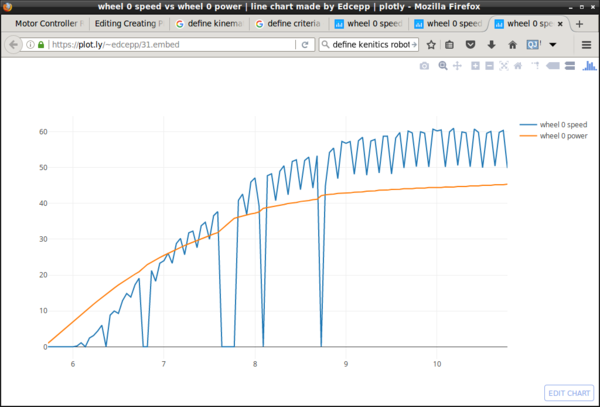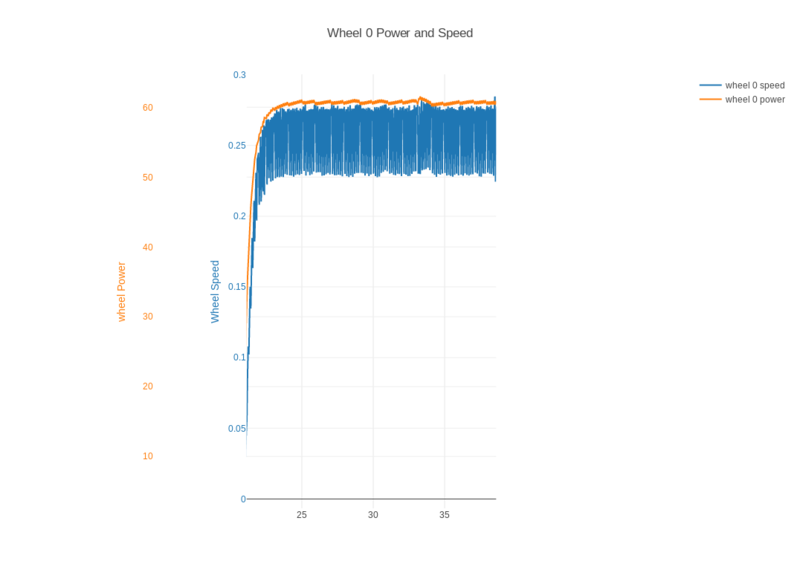Odometry Glitches
Contents
Background and Set Up
These odometry glitches were discovered during motor control PID tuning. See
Example Graph
These measurements are under load.
Observations
- Notice the odometry glitches that report a 0 m/sec wheel speed. This issue appears to be an odometry node bug when the angular velocity stays at 0 rad/sec. See below.
- Notice the wheel speed short term oscillation. This issues appears to be an encoder node issue bug because of a lack of time precision. See below.
Zero Wheel Speed Glitches
The motor Twist messages are generated with the following command which specifies a 0.2 m/sec linear x and 0.0 rad/sec angular z. As result, the robot cross the 0/360 degree boundary multiple times. Each time a bug result in reporting a 0 speed to odometry.
python motors_go_full.py 0.2 0.0
A second Twist command adds confusion. The angular z component is now set to 0.4 rad/sec making the robot's angular position cross quadrant boundaries more often. There are not zero velocity glitches.
python motors_go_full.py 0.2 0.4
Short Term Oscillations
One candidate for the short term oscillations that ride on top of the wheel speed line is the lack of encoder time precision. This has not been verified. What follows are some data points.
Odometry Publication Rate
Odometry is published 22 times a second. See the frequency definition in line 407 of odometry.cpp.
Wheel Speed Publication
The motor controller publishes wheel speed and power values whenever it receives a odometry publication. The Example Graph above
- Displays 22 points every second.
- Displays 7 dips every second. (Roughly 1/3 have speed values significantly lower than average.
Encoder Publications
There are roughly 125 encoder messages published each second by each encoder like the two below. The rate of 125 corresponds to one roughly every 8 milliseconds. See the time field. Measurement show that
- 102 or about 80% have a time value of 8 ms
- 23 or about 20% have a time value of 7 ms
---
header:
seq: 2171
stamp:
secs: 0
nsecs: 0
frame_id:
index: 0
count: -64455
count_change: -33
time: 7
---
header:
seq: 2172
stamp:
secs: 0
nsecs: 0
frame_id:
index: 0
count: -64488
count_change: -33
time: 8
---

